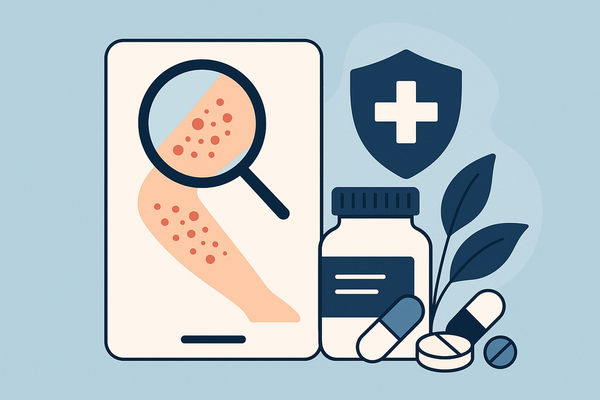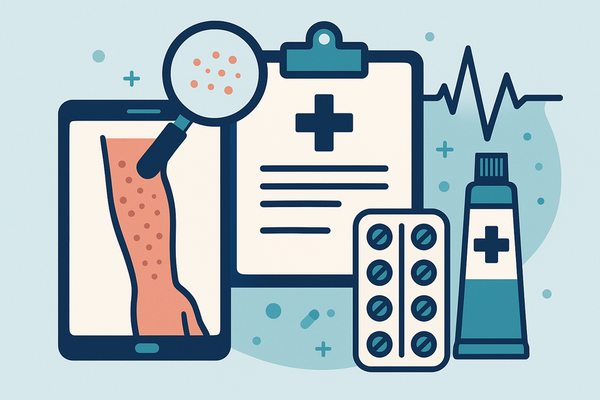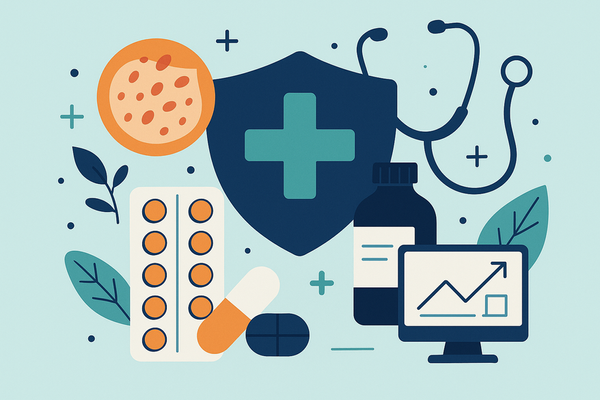How to Treat a Rash on Neck and Other Body Areas
Explore effective ways to treat a rash on neck, inner thigh, back of arm, and genital areas. Learn symptoms, remedies, and when to seek medical advice.

Estimated reading time: 10 minutes
Key Takeaways
- Identify the rash type and location to determine the cause and treatment.
- Home remedies and OTC options—like hydrocortisone, antifungals, and cool compresses—offer quick relief for most mild rashes.
- Maintain proper hygiene, moisture control, and breathable clothing to prevent recurrent irritation.
- Seek medical advice for severe, spreading, or persistent rashes, especially on the neck or genital area.
Table of Contents
- What Is a Skin Rash?
- Why Location Matters: Lifestyle, Environment & Hygiene
- Rash on Neck
- Rash on Inner Thigh
- Rash on Back of Arm
- Rash Between Legs
- Genital Rash Male
- Butt Cheek Rash
- Common Causes & Risk Factors
- Diagnosing Skin Rashes
- Treatment Options & Home Remedies
- Prevention Tips
- Conclusion
What Is a Skin Rash?
A skin rash refers to visible inflammation or dermatitis—ranging from red, itchy patches to blisters or scales. It can occur anywhere on the body, including the neck, inner thigh, or between the legs.
Common symptoms include:
- Itching (pruritus)
- Swelling or tenderness
- Color changes (red, pink, brown)
- Oozing, crusting, or blistering
Location often suggests cause: friction under collars may trigger a rash on neck, while chafing during exercise can lead to a rash on inner thigh or one between legs. Environmental factors like heat, humidity, and allergens also play key roles.
Trusted sources include Medical News Today and Tru-Skin.
Why Location Matters: Lifestyle, Environment & Hygiene
Different areas face unique stresses that can irritate the skin:
- Neck: Friction from jewelry or collars; sweat accumulation.
- Inner Thigh: Skin-on-skin rubbing; moisture build-up.
- Between Legs: Warm, dark creases perfect for fungal growth.
- Butt Cheeks: Pressure from sitting and trapped humidity.
Hygiene habits—both under-washing and over-washing with harsh soaps—can exacerbate rashes. Balancing gentle cleansing with proper drying is essential (Medical News Today).
Rash on Neck
A rash on neck appears as red, itchy patches, often with raised bumps or tiny blisters.
Symptoms: intense itching, redness, warmth, papules, occasional vesicles.
Common causes:
- Friction from jewelry or rough fabrics
- Allergic contact dermatitis (fragrances, detergents)
- Fungal or bacterial infections
- Heat rash (blocked sweat ducts)
Home & OTC remedies:
- Gentle, fragrance-free cleansing twice daily
- Hydrocortisone 1% cream (apply 2–3 times/day)
- Oral antihistamines like cetirizine for itch relief
- Cool compresses for 10 minutes, several times a day
Seek medical attention if the rash spreads rapidly, blisters worsen, or systemic symptoms develop (UCHealth).
Rash on Inner Thigh
This rash manifests as red, itchy patches or ring-shaped lesions, often called “jock itch.”
Causes: friction, excess sweat, fungal infection (Tinea Cruris), contact dermatitis.
Treatments:
- Daily gentle cleansing and thorough drying
- Clotrimazole 1% cream twice daily for two weeks
- Barrier creams (zinc oxide, petroleum jelly) to reduce friction
- Breathable, moisture-wicking fabrics during exercise
Rash on Back of Arm
Characterized by small bumps or red papules on the posterior upper arm.
- Insect bites: mosquito or flea reactions
- Allergic contact dermatitis: lotions or fabrics
- Heat rash: clogged sweat ducts
- Eczema: chronic, scaly patches
Relief tips include cool compresses or oatmeal baths, low‐strength hydrocortisone, and pH‐balanced cleansers (UCHealth).
Rash Between Legs
Moist, red patches in the groin crease causing chafing.
- Friction from walking or running
- Sweat-induced moisture
- Fungal overgrowth (Tinea Cruris)
Treatment: gentle washing, medicated antifungal powders, loose cotton underwear, and barrier creams (Tru-Skin).
Genital Rash Male
Red bumps, scales, or ulcers on male genitalia, often with itching or burning.
- Irritants: harsh soaps, fabrics
- Fungal infections: Candida yeast overgrowth
- Allergic reactions: condoms, lubricants
- STIs: herpes (vesicles), syphilis (chancres)
Persistent or painful rashes require professional evaluation and lab tests for accurate diagnosis and treatment (UCHealth).
Butt Cheek Rash
Irritation or heat rash on the buttocks, aggravated by sitting.
- Pressure and friction from prolonged sitting
- Occluded sweat glands in humid conditions
- Allergic contact dermatitis from detergents
Use fragrance-free soap, hypoallergenic detergents, barrier ointments, and low‐strength hydrocortisone. See a doctor if no improvement in one week or signs of infection (Tru-Skin).
Common Causes & Risk Factors
Most rashes share overlapping triggers:
- Allergens (soaps, fabrics)
- Heat, sweat, and humidity
- Friction and chafing
- Infections (fungal, bacterial, viral)
Unique factors—like necklace friction on the neck or tight undergarments between legs—heighten risk in specific areas.
Diagnosing Skin Rashes
Self-care is suitable for mild, non‐spreading rashes without systemic symptoms. Seek medical attention for rapid spread, severe pain, blisters, or fever. Providers may perform skin swabs, cultures, or biopsies for definitive diagnosis (Medical News Today).
Treatment Options & Home Remedies
- OTC creams: hydrocortisone, antifungals, calamine
- Oral antihistamines: cetirizine, loratadine
- Home remedies: cool compresses, oatmeal baths, barrier creams
- Area‐specific tips: avoid jewelry on the neck; use anti‐chafing sticks on the inner thigh; patch‐test lotions for the arm; talc‐free powder between legs; gentle cleansing of genitals; barrier ointment for buttocks.
Prevention Tips
- Maintain daily hygiene and dry skin folds
- Wear breathable, moisture‐wicking fabrics
- Avoid known allergens in skin care products
- Use anti‐chafing powders and stand‐up breaks when seated
Conclusion
Understanding whether a rash is caused by friction, allergens, infections, or heat guides effective treatment. While most mild rashes improve with home care—gentle cleansing, cool compresses, and OTC creams—persistent or severe cases, especially on the neck or genitals, warrant professional evaluation. Early diagnosis and targeted treatment ensure a faster, safer recovery.
For quick, AI-powered rash assessment, consider Rash Detector to upload images and receive an instant analysis.

FAQ
- When should I see a doctor for a rash? Seek medical care if a rash spreads rapidly, blisters, is painful, or is accompanied by fever.
- Can I use hydrocortisone on any rash? Hydrocortisone is safe for most mild inflammatory rashes but should not be used on infected or broken skin without professional advice.
- How do I prevent chafing on the inner thigh? Apply anti-chafing powder or stick before activity and wear moisture-wicking, loose-fitting shorts.
- Is a genital rash always a sign of an STI? Not always. Many genital rashes result from irritants, yeast infections, or allergens but persistent or painful rashes require STI screening.
- What home remedy soothes heat rash? Cool compresses, colloidal oatmeal baths, and loose clothing help unblock sweat ducts and soothe irritation.





